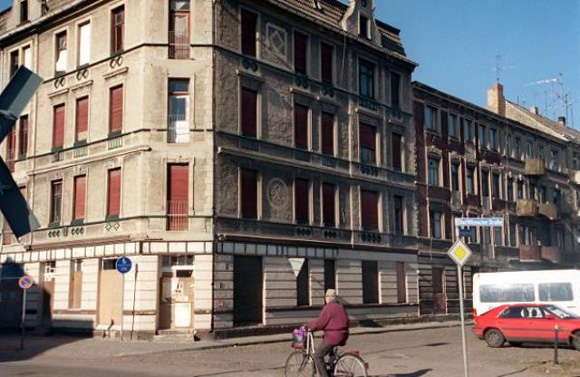Source

Source: picture-alliance / ZB (c) ZB-Fotoreport
Before the Wende, the largest employers in the Brandenburgian town of Wittenberge were a publicly owned pulp and viscose rayon plant [VEB Zellstoff- und Zellwollewerke] and a sewing machine factory. After 1990, almost all of those jobs were lost to restructuring. Low birthrates and high rates of out-migration caused Wittenberge to lose about 10,000 residents after 1989/90. Because prospects there were grim, many people – especially the young ones – moved to big cities such as Hamburg and Berlin, and to the West German federal states; many of those who left were young women. It is predicted that some individual cities in the state of Brandenburg will see a one-third drop in population by 2015. According to one estimate, more than 12% of Brandenburg's 150,000 residential units were vacant in 2001 on account of population decline. In Wittenberge, the vacancy rate was even as high as 40 percent.

Source: picture-alliance / ZB (c) ZB-Fotoreport